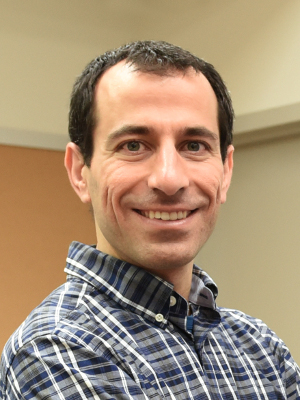Control Seminar
Utilizing Persistent Homology for Studying Time Series of Dynamical Systems
This event is free and open to the publicAdd to Google Calendar

Abstract
Dynamical systems is a term broadly used to describe processes whose state changes in time. Sometimes it is possible to derive a model, i.e., a set of equations, which can capture to some degree the evolution rule of these systems. The hope is that these models will be simple enough but will still faithfully reproduce the important phenomena observed in the physical system. While models are very useful because they enable the prediction, optimization, and simulation of the system response, some processes are often too complicated or too large to be captured by a set of mathematical equations. In this case, we often resolve to using a variety of sensors to collect data that can reveal more information about possible patterns or shifts in the system behavior. The sensory data is called a time series and it is often a record of a measurable quantity such as position in time. In many cases, it is possible to utilize this record to build a high dimensional representation of the system’s dynamics via a process called embedding. The result of embedding is a structure that can provide insight into the system’s behavior without having a mathematical model for it. It turns out that the shape of this structure can convey important information about the underlying, model-free system. For example, an embedding of a circular structure indicates the existence of repeatability in the data. However, there are two challenges with using the shape to extract useful information: 1) While humans are good at identifying hidden structure, the goal is to automate the process of information extraction especially when the size of the data is large and it is not desirable to use human power for data analysis. 2) Sometimes the resulting embedding cannot be visualized, i.e., it is in 4 or higher dimensions. Therefore, it is necessary to have a tool that can quantify the shape of the data, and summarize it in a human-readable way. Luckily, this tool is provided by a novel field with many mature tools: Topological Data Analysis (TDA).
Persistent homology, the flagship method of TDA, can be used to provide quantitative summary of the shape of data. When the data is a time series, one method relies on embedding the data into a finite, discrete metric space (whether or not it arises from a Euclidean embedding) and to study the resulting filtration of the Rips complex. In this talk, we will discuss several available methods for turning a time series into a discrete metric space. Combined with persistent homology and machine learning methods, we show how this can be used to classify behavior in time series in both synthetic and experimental data. We also show recent results to test for periodicity or chaos in a time series by utilizing a persistence-based score on the density estimates of two-dimensional projections of the time series into a Hilbert space.
Biography
Dr. Firas Khasawneh is an Assistant Professor of Mechanical Engineering at Michigan State University. Prior to joining MSU, Dr. Khasawneh was an assistant professor of Mechanical Engineering at SUNY Polytechnic Institute in Utica, NY from 2013 to 2017. He received his PhD in 2010 from Duke University, and his Masters in 2007 from the University of Missouri-Columbia. His areas of expertise include nonlinear dynamics and vibrations, machining processes, and new approaches to time series analysis and machine learning. Dr. Khasawneh is a long-time member of both ASME and SME, and his research is funded by the National Science Foundation.
Speaker’s email: [email protected], and website: www.firaskhasawneh.com
 MENU
MENU 
